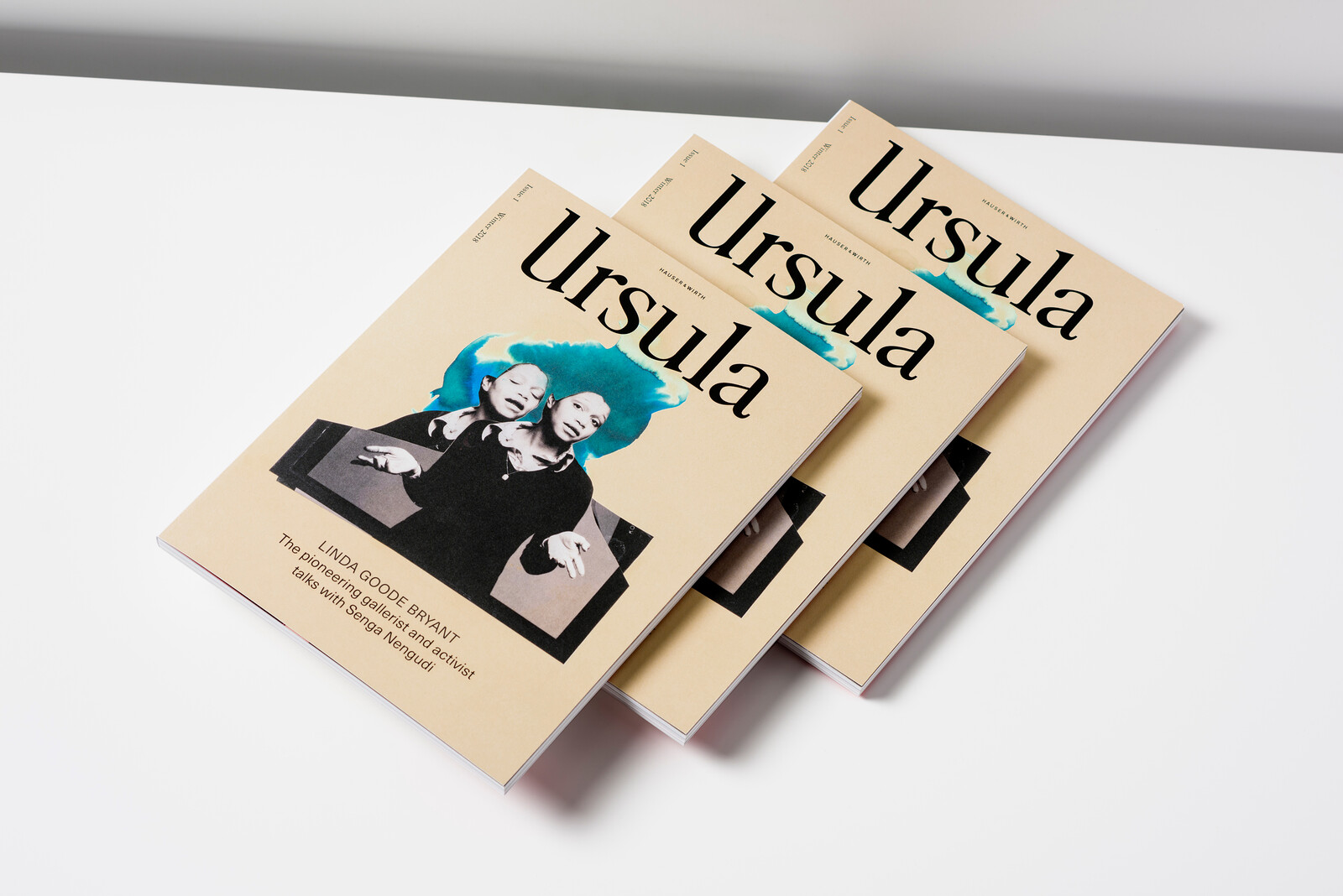“People were saying, ‘They won’t let us.’ I was frustrated by us not letting ourselves. Not understanding that we, in fact, can create what we need. If the doors aren’t being opened for you, then go out and make your own doors. Artists need opportunities for their work to be experienced by others. So let’s just create that.”—Linda Goode Bryant, founder of Just Above Midtown Gallery (1974-1986) and Project EATS.
Ursula, a new quarterly magazine from Hauser & Wirth, launches in December 2018 by looking back to find ways forward. The cover conversation, between two longtime friends—the pioneering dealer, filmmaker and activist Linda Goode Bryant and the artist Senga Nengudi—revisits the early days of the Just Above Midtown gallery, the first African-American-owned commercial gallery showing artists of color in Manhattan. The deeply personal conversation touches on questions on power, feminism, motherhood, the art world, social justice and food politics.
Other scenes from the first issue:
A cover built around a new collage by Lorna Simpson, based on a portrait of Linda Goode Bryant.
From the archives: A 1943 letter in disappearing ink written to photographer August Sander by his son, Erich, smuggled from the Nazi prison where he would die. “If only all the misery would come to an end soon …”
A new poem by Robin Coste Lewis, winner of the National Book Award, in response to the sculpture of Jack Whitten (1939-2018).“Outside I am a bird / but inside I am a boat / a boat in which I ferry our future back / and forth between the ancient and modern world.”
An essay by Alissa Bennett on her obsession with the life of Baroness Marion Lambert and Lambert’s tempestuous correspondence with crime writer Dominick Dunne. “While Marion was busy collecting a series of young women who could function as rotating surrogates for her absent daughter, I was busy looking for a person in the art world who could reliably follow through with a performance of liking me.”
An essay by Randy Kennedy about the underground influence of the classics scholar and radical Freudian Norman O. Brown on postwar art. “David Cronenberg, whose 1975 horror movie Shivers was inspired by Brown, once said: ‘Even old Norm had some trouble when he tried to figure out how that kind of Dionysian consciousness would function in a society where you had to cross the street and not get hit by a car.”
A conversation with Ida Applebroog, on her life and work: “I mean, I knew there was a lot wrong, personally, but it never occurred to me it was something I could do anything about. It was only later on that I read Betty Friedan. It was like this whole world suddenly opened and, ‘Oh really? Oh my God. Really? Yes, really.’”
An essay by Luc Sante about the under-traveled byways of Belgian surrealism and its engagement with the camera: “Since surrealism, like humor, can simply result from thwarted expectations—I reach for my hat but instead grab a fish—all photography has to do to be surrealist, in the final tally, is to be literal.”
A portfolio of new paintings by Amy Sherald: “The people have relieved themselves of the need to perform, and they’re just being themselves. When you walk into the painting, you’re walking into their space. The gaze is different.”
A profile of the architect Thomas Phifer by Thomas de Monchaux: “After mastering a certain soap-bubble lightness, he wanted to understand how a building could be more like a river stone, embedded in the flow of its place. ‘We were trying to get at this heaviness, to get down to earth.’”
A recipe by Pipilotti Rist for Japanese pickles: “Did you think they were made with vinegar? Wrong. It is one of the facts that made me aware that I should remember not to trust my first assumptions.”



